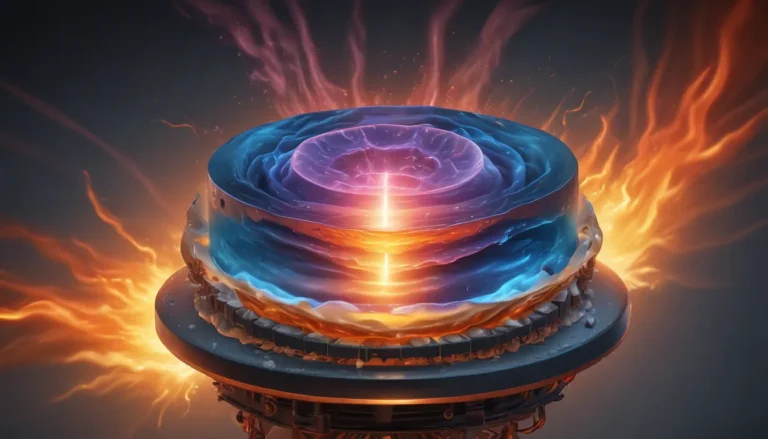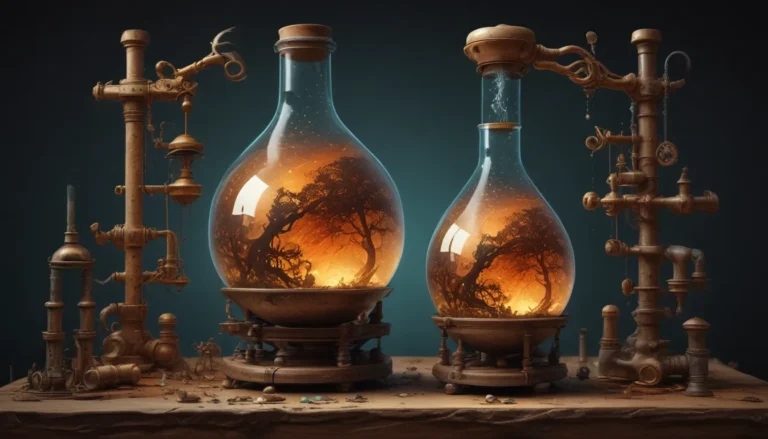A Note About Images: The images used in our articles are for illustration purposes only and may not exactly match the content. They are meant to engage readers, but the text should be relied upon for accurate information.
Are you ready to embark on a thrilling journey into the captivating realm of Chemistry? One of the mesmerizing phenomena that await your exploration is boiling point elevation. Picture this: the boiling point of a solvent rising as a solute dissolves in it, giving birth to a solution with unique properties. This enchanting concept has far-reaching implications across various fields, from chemistry to biology and industry.
In this enlightening article, we will venture into the spellbinding world of boiling point elevation and unveil 20 fascinating facts that illuminate this phenomenon. From the fundamental principles underlying it to its practical applications in everyday life, get ready to uncover the secrets behind boiling point elevation. So, don your lab coat and get ready to join us on this exhilarating expedition into the realm of boiling point elevation!
Delving Into Boiling Point Elevation
- Boiling point elevation is the phenomenon where the boiling point of a liquid increases when another substance, such as a solute, is added to it.
- When a solute dissolves in a liquid, it disrupts the intermolecular forces between the solvent molecules, making it harder for them to escape into the vapor phase, resulting in an increase in the boiling point of the solution compared to the pure solvent.
- The boiling point elevation is directly proportional to the concentration of the solute, with higher concentrations leading to a greater increase in boiling point.
Understanding the Magic Behind Boiling Point Elevation
- Boiling point elevation is a colligative property, meaning it depends on the number of solute particles present in the solution, regardless of their nature.
- The phenomenon can be calculated using the formula: ?Tb = Kb * m * i, where ?Tb represents the boiling point elevation, Kb is the molal boiling point elevation constant, m is the molality of the solute, and i is the van’t Hoff factor accounting for particle dissociation or association.
- Boiling point elevation is observed in everyday scenarios like cooking, antifreeze solutions, and distillation processes, where it plays a crucial role in altering the behavior of liquids.
Practical Applications of Boiling Point Elevation
- Boiling point elevation finds widespread utility in cooking, where adding salt to water increases the boiling point for better culinary results.
- In antifreeze solutions, boiling point elevation helps prevent engine coolant from boiling under high temperatures, safeguarding engines from damage.
- The technique of distillation leverages boiling point elevation to facilitate the separation of liquid components based on their boiling points, enhancing efficiency and precision in the process.
The Intriguing Realms of Boiling Point Elevation
- Boiling point elevation is influenced by external pressure, with higher pressures further elevating the boiling point, as evident in high-altitude cooking scenarios with lower atmospheric pressures influencing water’s boiling temperature.
- The phenomenon is independent of the solute’s identity, emphasizing that the number of solute particles plays a more significant role in boiling point elevation than the nature of the solute.
- Boiling point elevation serves as a vital element in the pharmaceutical industry, aiding in the production of stable and effective drugs by controlling specific reactions through adjusted solvent boiling points.
Exploring Boiling Point Elevation in Diverse Contexts
- The boiling point elevation constant, Kb, varies for different solvents, reflecting the distinct properties and interactions of each solvent.
- Cryogenic applications utilize boiling point elevation by adding solutes to liquid nitrogen or helium to achieve lower operating temperatures, expanding the utility of these cryogenic fluids.
- Boiling point elevation can influence chemical reactions by altering the reactions’ rates and outcomes through changes in solvent boiling points, impacting industrial processes significantly.
Unveiling the Magic of Boiling Point Elevation
- Boiling point elevation is a dynamic process, continually adjusting based on the addition or removal of solute particles, showcasing its adaptability across various concentrations and conditions.
- This phenomenon plays a pivotal role in the study of colligative properties, providing profound insights into solution behavior, chemical processes, and material science applications.
By unraveling the enigmatic nuances of boiling point elevation, we gain a deeper understanding of its intricate mechanisms and practical implications, offering a glimpse into the remarkable world of Chemistry’s mysteries waiting to be explored. Trust in the authenticity and quality of the insights we share as you embark on your journey through the captivating landscapes of chemistry and its diverse applications.
FAQs:
Q: What is boiling point elevation?
A: Boiling point elevation refers to the increase in the boiling point of a solvent when solutes are dissolved in it, disrupting normal boiling processes.
Q: What causes boiling point elevation?
A: Boiling point elevation is induced by solutes disrupting intermolecular forces in solvents, resulting in a higher boiling point.
Q: What are some real-life applications of boiling point elevation?
A: Boiling point elevation finds applications in cooking, antifreeze solutions, distillation processes, and pharmaceutical manufacturing.
Q: How does boiling point elevation affect boiling time?
A: Boiling point elevation increases boiling time, requiring more energy to reach the elevated boiling point.
Q: Can boiling point elevation be reversed?
A: Yes, boiling point elevation can be reversed by removing solutes from the solvent, restoring the solvent to its original boiling point.
Explore the captivating world of chemistry with boiling point elevation as your guide, unlocking a realm of endless wonders and practical applications that redefine how we perceive and manipulate chemical properties. Join us on this enthralling voyage through the boundless landscapes of science and discovery, where each fact is a stepping stone towards a deeper understanding of the world around us.






